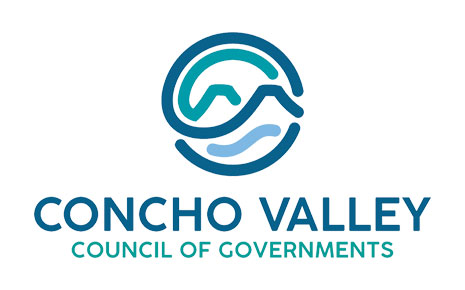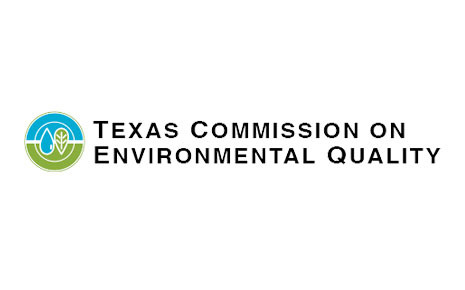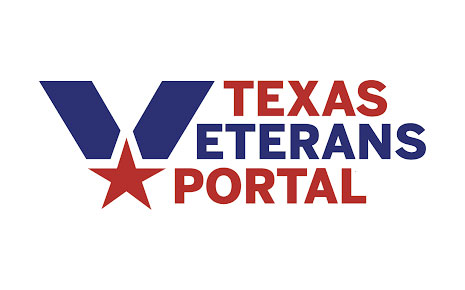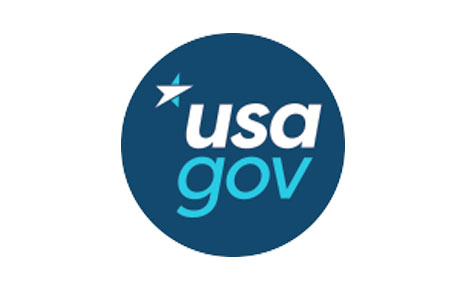Regional & State Partners
Economic Development Corporations and Partners
Andrews Economic Development Corporation
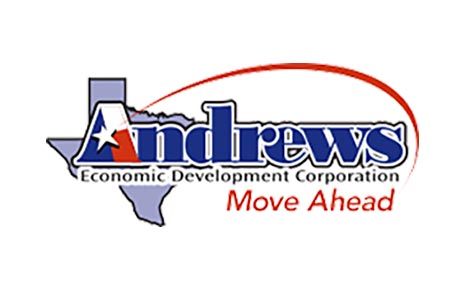
The purpose of the Andrews Economic Development Corporation is to promote, assist and enhance economic development and business enterprises in and around Andrews, Texas. Andrews tops Texas as the fastest growing micropolitan area, and Andrews County was the second fastest growing county in the country between 2010 and 2015.
Andrews Economic Development Corporation was authorized by the Development Corporation Act of Texas to collect sales tax economic development incentives. Incentives are based on the number of new jobs created, the annual payroll and the amount of your capital investment.
Big Spring Economic Development Corporation

How We Help
Big Spring EDC targets specific industries, activities and opportunities on which to focus recruitment and retention efforts. Matching location strengths to industry requirements and to industry demand patterns is critical in target industry identification, and an essential component of an effective development strategy. These defined industries are a likely match for the relocation or expansion of primary jobs in Big Spring.
Here are a few of the things we help businesses within Big Spring:
- Location/Relocation of companies to Big Spring
- Expanding your company in Big Spring
- Incentives & Funding Applications
- Finding property or buildings
- Workforce resourcing and training
- Custom data and information on our region
Fort Stockton Economic Development

Fort Stockton is a regional center for government, medical care, and retail sales. Federal, state, and regional offices located in Fort Stockton include the Texas A&M Cooperative Extension Service Region 6 Headquarters, the Texas Department of Public Safety, the United States Department of Agriculture, the Texas Workforce Commission, and the United States Forestry Service.
The Pecos County Memorial Hospital and associated medical services provide care for a large area of the Big Bend and Trans-Pecos region of Texas. A trade area that includes 10 counties and cities along the Mexican Border generates retail sales in the community. The trade area population is roughly 100,000.
Iraan-Sheffield Chamber of Commerce

The Iraan-Sheffield Chamber of Commerce seeks to promote the well being of commerce, industry, agriculture, civic interests and citizenship in our community. We achieve this goal through the promotion and support of local businesses and civic groups.
We also offer activities which give the community a chance to come together. Those activities include the Historical Annual Alley Oop Festival, 4th of July Pops In The Park, Harvest Festival Partnered with Kinder Morgan, Santa in the Square with holiday lights display and so much more.
Lamesa Economic Development Corporation

It is the goal of Lamesa Economic Development to support economic development activities that create jobs and bring new capital into the area, as well support the expansion of existing businesses. Lamesa Economic Development works closely with the Lamesa Chamber of Commerce, the City of Lamesa, and other local, regional, state and federal entities to assist and support the business community.
The mission of LEDC & LEAP are to “Establish a Vibrant and Competitive Economy” to improve the quality of life in Lamesa, TX.
McCamey Economic Development Corporation

We Are Here to Build a Community
To promote economic development and business diversification in McCamey by using the following objectives; creating new jobs, realizing a net gain in property taxes collected, collecting additional sales tax, making improvements that result in McCamey being a more attractive place for living, visiting and investing.
Midland Economic Development Corporation

The Midland Development Corporation (MDC), is here to provide assistance to businesses who operate in Midland or are considering moving to our area. The focus of our organization is on creating opportunities for businesses and families located within Midland. We do so through economic development activities, outreach, education and by providing support.
Goals
- The Midland Development Corporation will attract diversified industries and business to Midland.
- The Midland Development Corporation will retain and encourage expansion of existing businesses.
- The Midland Development Corporation will provide assistance to develop areas of the City of Midland that meet the city’s development objectives.
- The Midland Development Corporation will market, recruit and strengthen Midland’s workforce for current and future employers.
Monahans Economic Development Corporation
.jpg)
Monahans has a strong commitment to a diversified economy and less reliance upon the oil field industry that has sustained her for decades.
Our Focus
We are focused on building our future…
- enhance the general economic health of all citizens in the community.
- increase wages.
- improve benefits.
- strengthen tax base.
- create jobs.
- increase goods and services available in our community.
- improve our image.
- enhance the quality of life.
Why Monahans?
- Monahans is located in an “air-attainment” zone.
- Monahans is the County Seat of Ward County.
- Monahans has land available for development.
- We’re waiting to help your business prosper in Monahans
Odessa Economic Development Corporation

The Odessa Development Corporation (ODC) focuses on Odessa economic development and local business retention and expansion. The ODC provides job creation grants, capital investment grants and other incentives for businesses seeking to expand in Odessa.
Our mission is to:
- Create new jobs
- Grow the tax base
- Promote business activity and expand business compatible with Odessa
- Diversify the economy
- Help build a skilled and educated workforce in Odessa
Pecos Economic Development Corporation

The PEDC is focused on developing business and industry while also keeping the ideals of our community at heart. They allow our area to grow and prosper without losing its Old West heritage, the foundation of our community.
Growth of the Pecos area revolved around the ranching and farming industries in the beginning, but the early 20th century gave birth to the oil and gas industry, which remains a major factor in our economy to this day.
Chambers of Commerce
Andrews Chamber of Commerce

The Andrews Chamber is a private, non-profit corporation with a 501-C6 designation and serves as a voluntary organization of citizens who invest their time and money in a community development program. There is a misconception that the Chamber is run by the City and/or the County governments. This is not true. We are run solely on membership dues. Membership dues help support our day-to-day operations and community events, such as the 4th of July Festivities, Holly Jolly Weekend, and Leadership Andrews, which are led by our Chamber volunteer organizations.
Big Spring Area Chamber of Commerce
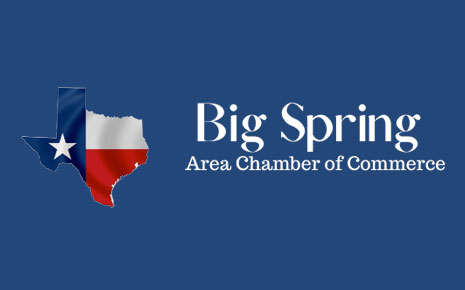
Let Us Serve You
The Big Spring Area Chamber of Commerce’s mission is to advance the civic, economic, cultural, and social betterment and interests of its members and the people of Howard County.
The Big Spring Area Chamber of Commerce serves as an advocate for the creation, growth and general welfare of businesses in Howard County. The Chamber actively promotes the expansion of business opportunities on behalf of its members through referrals, luncheons/breakfasts, and seminars, partnerships, technical assistance, and marketing.
Our Mission Statement
“The Big Spring Area Chamber of Commerce’s mission is to advance the civic, economic, cultural and social betterment and interests of its members and the people of Howard County.”
Black Chamber of Commerce of the Permian Basin

Chartered in 1984, by the Texas Secretary of State, the mission of the Black Chamber of Commerce of the Permian Basin (BCCPB) is to foster the development and growth of Black-owned and small/minority businesses; and to encourage convention and tourism especially in the black community. Located in the City of Odessa County of Ector County.
BCCPB is actively involved in promoting economic empowerment and diversification through the National Black Chamber of Commerce and is a charter member of the Texas Association of African American Chambers of Commerce and a current member also of the National Black Chamber. The Chamber also enjoys ties with the Greater Odessa Chamber of Commerce, the Odessa Hispanic Chamber of Commerce, the University of Texas of the Permian Basin Small Business Development Center and other area Chambers of Commerce.
The Economic Development Plan supports increased collaboration between the Black Chamber, local and state agencies, nurtures the creation, expansion and retention of small, minority and home based businesses, promotes development and markets Odessa as an attractive place to visit, work and live.
Fort Stockton Chamber of Commerce

The Fort Stockton Chamber of Commerce supports and strives to enhance the economic prosperity of local businesses, with the aim of improving the quality of life for Fort Stockton residents, businesses and organizations. Our goal is to further the interests of businesses. The Chamber of Commerce is an organization of members who are investing their time and money in community development programs – working together to improve the economic, civic, and cultural wellbeing of the area.
We promote collaboration and assist local businesses by providing training on many business aspects, providing business services, and helping businesses connect with other businesses inside and outside the area. We strive to provide services that are beneficial to the community organization and to its members as a whole.
Midland Chamber of Commerce
Midland Hispanic Chamber of Commerce

Home of the Mex-Tex Family Fiesta and the only Business Incubator Success Program in the area.
We are committed to:
- Growth, Great Support, and Communication with our active membership
- To work closely in Engaging New Members into activities that provide opportunities for great community citizenship and successful networking
- Create close Working Relationships with a Diverse Group of partnering organizations
- The Midland Hispanic Chamber of Commerce provides commerce opportunities through quality of education, quality of business, quality of jobs, and quality of life.
Monahans Chamber of Commerce

The Monahans Chamber of Commerce is a membership organization which promotes business issues and concerns on behalf of its members for the betterment of the community.
The Chamber is a vital organization within a growing community, and the opportunities for being an integral part of what is happening in Monahans are limitless. As the city moves forward, the Chamber will provide leadership and direction which will help set the course for the Monahans of the future. We encourage any of you not already involved to join us in this effort.
The way we do business each day is changing because of technology, information and innovation, however, the face of business remains unchanged. Individuals make business happen and our best asset is the personal touch.
Odessa Chamber of Commerce

Mission
The Odessa Chamber of Commerce is a volunteer business organization providing leadership to further develop and market the city of Odessa, Ector County, and the Permian Basin.
The Odessa Chamber of Commerce is your connection to Odessa's business community. With more than 725 members, we are the premier business advocacy organization that continues to improve business and living opportunities in Odessa. The Chamber is a 501(c)6 nonprofit organization with three departments:
- Operations, which is funded through membership dues, sponsorships, and non-dues revenue
- Economic Development, which is funded by the Odessa Development Corporation
- Discover Odessa, which is funded through the City of Odessa Hotel/Motel tax.
The Odessa Chamber's core focus areas are:
- Business and Workforce retention, expansion and attraction
- Small Business and Entrepreneur support
- Advocacy
- Networking opportunities
- Leadership Training
- Quality of Life Issues
Pecos Chamber of Commerce Women's Division

Women's Division assists in activities for the community of Pecos.
The Women's Division sponsors or assists in some of the following projects:
- The Golden Girl Pageant
- Little Miss Cantaloupe
- The Mother Goose Parade
- The Pecos Fireman's Appreciation Dinner
- Chamber of Commerce Banquet
- Pecos Rodeo Parade
- Annual Thanksgiving Dinner
- and many other activities.
Seminole Area Chamber of Commerce
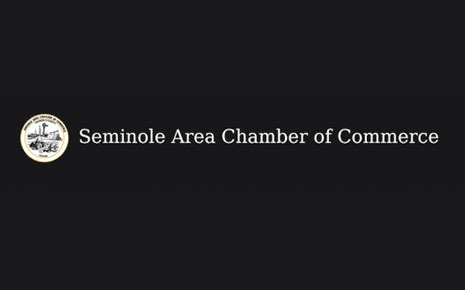
We are a non-profit entity, governed by a board of directors that is elected by the membership.
We are a diverse group as well, made up of businesses of all sizes, cultures, and shapes, along with a number of individual members. All of us share a common goal: To promote Seminole, Texas and keep its economy operating at the highest possible level. Our Chamber office is located on the courthouse square in Seminole, at 119 SE Avenue B
We respond to thousands of requests annually, both by phone and in person, which range in scope from information on the city or particular businesses to relocation and visitor packages.
Stanton Chamber of Commerce

Martin County Chamber of Commerce
Laura Samanukorn, Director
PO Box 615
Stanton, TX 79782
432.756.3386
chamber@co.martin.tx.us
Councils of Governments in Texas
Texas Association of Regional Councils

The Texas Association of Regional Councils (TARC) is the statewide association of regional councils, whose members are focused on enhancing quality of life through regional strategies, partnerships and solutions. The 24 regional councils, also known as councils of governments (COGs), are comprised of city, county and special district members working together to implement cost-effective, results-oriented strategies that address statewide and local needs on a regional scale.
Alamo Area Council of Governments
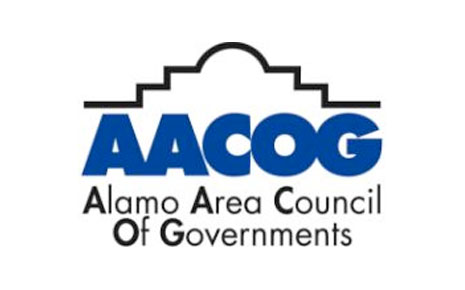
Who We Are
Member Governments
Defined as a political subdivision of the State of Texas, the Alamo Area Council of Governments (AACOG) was established in 1967 under Chapter 391 of the Local Government Code as a voluntary association of local governments and organizations that serves its members through planning, information, and coordination activities. AACOG serves the Alamo Area/State Planning Region 18, which covers 13 counties and 12,582 square miles. Comprising the area planning region are Atascosa, Bandera, Bexar, Comal, Frio, Gillespie, Guadalupe, Karnes, Kendall, Kerr, Medina, McMullen, and Wilson counties.
AACOG's Mission
The mission of the Alamo Area Council of Governments is to enhance the quality of life of all residents of the Alamo Region in partnership with elected and appointed officials, funders, community partners and beneficiaries.
AACOG's Core Values
- Performance with Integrity
- Commitment to Excellence
- Service before Self
- Culture of Appreciation
- Together We Succeed
Ark-Tex Council of Governments

The primary goal of ATCOG is to improve the quality of life for all citizens of the region on behalf of regional governmental organizations by providing a perspective on information and problem solving and by coordinating funding, resources, programs and services. It is our desire to be of service to you and we are delighted that you have visited our site. Please feel free to contact our offices regarding any particular program in which you have an interest.
Brazos Valley Council of Governments

Originally designated as the federally recognized Brazos Valley Economic Development District in 1966, the council officially reorganized as the Brazos Valley Development Council in 1967 as the result of state legislation. The legislation created 24 statewide planning regions each comprised of a voluntary association of local governments. The regions’ boundaries were based upon a number of characteristics including geographic features, economic market areas, labor markets, commuting patterns, and even media coverage areas.
The BVCOG region consists of 7 counties:
- Brazos
- Burleson
- Grimes
- Leon
- Madison
- Robertson
- Washington
Capital Area Council of Governments

From emergency communications to economic development, some things just make sense for collaboration at the regional level, and the Capital Area Council of Governments (CAPCOG) helps make that happen every day.
Formed in 1970, CAPCOG for more than 50 years has served as an advocate, planner and coordinator on important regional issues in the 10-county encompassing Austin-Round Rock-Georgetown Metropolitan Statistical Area.
With more than 90 member governments and organizations, including cities, counties, school and appraisal districts, utilities, chambers of commerce and more, CAPCOG has helped the region recognize opportunities for cooperation and eliminate unnecessary duplication in emergency communications, elderly assistance, law enforcement training, criminal justice planning, solid waste reduction, homeland security planning, infrastructure development, transportation planning and economic development.
CAPCOG and its members’ mission is to continue to strengthen the Capital of Texas ten-county region by supporting urban and rural local governments through coordination, collaboration, and sharing of ideas and resources.
Central Texas Council of Governments

Accomplishing together that which we cannot accomplish alone.
The Central Texas Council of Governments helps local communities work cooperatively to improve the conditions and well-being of Central Texans. Whether reaching out to elders in need of at-home or nursing home assistance, helping a family find a safe and affordable home, providing essential transportation planning, or keeping you safe through emergency and security programs, we serve with compassion dedication and professionalism.
Coastal Bend Council of Governments

The Coastal Bend Council of Governments (CBCOG) is a volunteer association of local governments, cities and counties, and other public and private entities.
Formed in March 1966, by the authority of the State of Texas, the CBCOG provides a cost-effective way to plan, coordinate and implement regional projects and provide technical assistance within the region.
Deep East Texas Council of Governments

The Deep East Texas Council of Governments and Economic Development District is a voluntary association of local governments in the 11 county region encompassing all of Angelina, Houston, Nacogdoches, Newton, Polk, Sabine, San Augustine, San Jacinto, Shelby, Trinity and Tyler counties. We are one of the largest rural COGs in the nation. At 9,413 square miles, the DETCOG region is larger than the states of New Hampshire, New Jersey, Connecticut, Delaware and Rhode Island. Our 2019 population was 339,125.
DETCOG is both a political subdivision of the State of Texas and a federally chartered Economic Development District. We are one of 24 regional councils of governments in Texas. We were founded to facilitate planning, eliminate duplication, and promote economy and efficiency in the coordinated development of our region. While we are a governmental agency, we have no taxing or ordinance making authority.
We are governed by a diverse 53-member Board of Directors which is representative of the population we serve. As required by law, more than two-thirds of our board members are elected officials of member counties and cities.
East Texas Council of Governments

We are a voluntary association of counties, cities, school districts and special districts within the fourteen-county East Texas region. We assist local governments in planning for common needs, cooperating for mutual benefit and coordinating for sound regional development. Either directly, or through our contractors, ETCOG provides programs and services for East Texas seniors, employers and job seekers. We also build the 9-1-1 emergency call delivery system, provide peace officer training and homeland security planning services; and deliver rural transportation services, business finance programs, grant writing services and environmental grant funding for the region.
Golden Crescent Regional Planning Commission

The Golden Crescent Regional Planning Commission (GCRPC), a regional voluntary association of local governments, special districts, and other agencies, is one of twenty-four (24) regional associations in Texas and one of 670 in the United States. Created in response to the Regional Planning Act of 1965, as amended and codified, GCRPC is defined as a political subdivision of the state.
The basic responsibility of the GCRPC involves planning for the development of the seven county Golden Crescent region and assisting local governments in implementing regional plans and recommendations. Since its inception in 1968, the GCRPC has grown to include comprehensive planning and service delivery in program areas such as aging, economic development, E9-1-1, solid waste management and rural transportation.
Heart of Texas Council of Governments
Houston-Galveston Area Council

The Houston-Galveston Area Council (H-GAC) is the regional organization through which local governments consider issues and cooperate in solving area wide problems. Through H-GAC, local governments also initiate efforts in anticipating and preventing problems, saving public funds. The 13-county H-GAC service region is growing, becoming more diverse, and constantly changing. In order to address the needs of citizens and businesses, local governments are providing leadership to guide regional development wisely and manage change constructively.
Lower Rio Grande Valley Development Council

The LRGVDC promotes cooperation among local units of government and provides forums and opportunities for them to work with economic interests and citizen groups in order to improve the region's health, safety, and general welfare and to plan for future development.
State law authorizes commissions like the LRGVDC to make studies and plans to guide unified, far-reaching development of a region, eliminate duplication, and promote economy and efficiency through coordinated development.
Nortex Regional Planning Commission

Nortex Regional Planning Commission (NRPC) is a region-wide voluntary association of local governments. Its service area is 9,461 square miles and contains approximately 224,336 people.
NRPC’s mission is to serve its members as the instrument of local government cooperation and coordination for the purpose of improving the health, safety, and general welfare of their citizens.
NRPC is the entity through which local governments consider issues and cooperate in addressing area wide problems.
NRPC is governed by an Executive Committee comprising local elected officials, representing member government bodies within the region.
North Central Texas Council of Governments

The North Central Texas Council of Governments (NCTCOG) is a voluntary association of, by and for local governments, and was established to assist local governments in planning for common needs, cooperating for mutual benefit, and coordinating for sound regional development. NCTCOG's purpose is to strengthen both the individual and collective power of local governments and to help them recognize regional opportunities, eliminate unnecessary duplication, and make joint decisions.
Panhandle Regional Planning Commission

Though the Panhandle, with its regional population of 427,927 living on the West Texas prairie may seem small to those living in a large metropolitan area, residents who live here proudly consider this region "their world." When a tiny seed is planted, such as the one that created the Panhandle Regional Planning Commission in 1969, something important emerges. Roots grow where resources - such as water, oxygen, and minerals - are available. Once the initial root completes its job of anchoring the plant to the soil, the secondary roots begin to branch off. Roots don't necessarily grow in any particular direction. Instead, root growth is opportunistic in its timing and its orientation.
Rio Grande Council of Governments

Serving the seven counties of Brewster, Culberson, Doña Ana, El Paso, Hudspeth, Jeff Davis, Presidio, and the Tribal Nation of Ysleta del Sur Pueblo
The Rio Grande Council of Governments is a voluntary association of local governments formed under Texas law. In January of 1967, local elected officials in El Paso County joined together to form the El Paso Council of Governments. This organization was initiated to further intergovernmental cooperation and coordination in the planning, development and delivery of governmental services within El Paso County, Texas.
In 1971, the counties of Hudspeth, Culberson, Jeff Davis, Presidio and Brewster were included in the organization to form a truly “Regional” body, and the organization was renamed West Texas Council of Governments. In 1987, by vote of the membership, Doña Ana County, New Mexico and the local governments within were included as full members and the name of the organization was changed to the Rio Grande Council of Governments.
South East Texas Regional Planning Commission

A voluntary association of local governments that serves Hardin, Jefferson, Orange & Jasper Counties.
The Planning Commission was established in June, 1970 under authority provided by the Texas Legislature in 1965. SETRPC is one of 24 Regional Planning Councils that serve all of Texas. Regional Council boundaries conform to the State Planning Region System whereby 24 areas or regions are delineated according to socio-economic and physical characteristics that set one area apart from another.
South Plains Association of Governments

The South Plains Association of Governments (SPAG) is a Council of Governments that serves a fifteen county region in North WestTexas. SPAG is the only organization representing all general purpose governments, both cities and counties, in the region.
SPAG was created in 1967 when local officials recognized that the South Plains is a unique region whose identity is defined by common interests, geography, climate, and economy. In essence, SPAG, is a service organization, created by its local government members to enhance their individual capacities.
South Texas Development Council

Mission Statement
South Texas Development Council is focused on providing a cost effective means to plan, coordinate, and implement regional strategies that will improve the health, safety, and general welfare of our communities.
About STDC
The primary focus of STDC is to serve as advocate, planner, and coordinator of initiatives that, when undertaken on a regional basis, can be more effective and efficient. These include homeland security, elderly assistance, law enforcement training, criminal justice planning, solid waste management, health services outreach and assistance, infrastructure development, economic analysis, transportation and regional planning, community and economic development, census data, and HIV services.
Texoma Council of Governments

Improving the quality of life across Cooke, Fannin and Grayson counties by delivering direct social & life-line services to citizens and professional & technical planning services to our local governments.
Who We Are
Texoma Council of Governments (TCOG) is a voluntary association of local governments in Cooke, Fannin, and Grayson Counties that works directly with citizens and local jurisdictions to improve and advance economic vitality and quality of life in Texoma. In collaboration with our public and private sector partners, TCOG delivers various programs and services designed to support the health, welfare, and future of our citizens, our communities, and the region as a whole.
Texas Economic Partners
Sites on Texas

SOTv3.0 is a geographic mapping technology that allows workforce and economic development professionals to effectively collaborate with employers and plan for business expansion, job retention, and workforce training. This technology allows users to access comprehensive demographic information to view labor market and economic data through charts and maps that convey complex statistical information in an easy-to-understand visual format.
The High Ground of Texas

The High Ground of Texas is a marketing coalition made up of over 75 members with economic development interests in the region. Developed in 1988, the High Ground represents cities, counties and organizations in the West Texas region. The main purpose of the High Ground is to create jobs and increase the tax base of the region. We continue to have a strong presence on the regional, state, and national level with an emphasis on marketing the region to prospective new industries, networking, economic development, education, and providing a common voice on issues that affect the region.
The organization is membership-based and is supported by a 15 person board. The board is made up of Foundation Members, COG representatives and eight at-large members from around the region.
Texas Economic Development Council (TEDC)

The Texas Economic Development Council (TEDC) is an Austin-based, statewide, non-profit professional association dedicated to the development of economic and employment opportunities in Texas. The TEDC is a 501(c)(6) membership organization; and therefore, any dues, registration fees, or sponsorships paid to the organization are not tax deductible.
The TEDC is a one-stop shop for ideas, information, and influence. We are the largest state association of economic development professionals, volunteers, and elected officials. Our diverse members share a common goal -- bringing new investment and jobs to Texas.
We provide information, educational and legislative services to more than 850 members representing more than 500 public and private economic development organizations, including more than 350 cities. Our objective is to support the economic growth of Texas and develop strategies that promote a positive business climate in our state.
Texas Economic Development Directory

The Professional's Directory
A directory of the economic development resources in Texas with significant information for site seekers -- site selection consultants, real estate departments, business people in Texas.
Locations for industrial and commercial sites, buildings, data centers, offices and retail locations in Texas.
Texas Associations and Organizations
Texas Association of Counties

In 1969, Texas counties joined together to improve and promote the value of county government statewide.
The Texas Association of Counties (TAC) is the representative voice for all Texas counties and county officials and, through TAC, counties communicate the county perspective to state officials and the general public. Understanding the way county government works and the value of county services helps state leaders preserve counties’ ability to serve their residents effectively.
This cooperative effort is managed by a Board of county officials. Each county office is represented on the Board. This group of local officials, each of whom is currently serving his or her community, establishes policy for TAC. The Board establishes the scope of TAC services and the Association's budget.
Texas Association of Regional Councils (TARC)

The Texas Association of Regional Councils (TARC) is the statewide association of regional councils, whose members are focused on enhancing quality of life through regional strategies, partnerships and solutions. The 24 regional councils, also known as councils of governments (COGs), are comprised of city, county and special district members working together to implement cost-effective, results-oriented strategies that address statewide and local needs on a regional scale.
Texas Municipal League

The League exists solely to provide services to Texas cities. Since the first day of its existence, the League's mission has remained the same: to serve the needs and advocate the interests of cities and city officials. It's purpose statement is Empowering Texas cities to serve their citizens. The TML Constitution states that the purpose of the League is "to render services which individual cities have neither time, money nor strength to do alone."
International City/County Management Association

ICMA is the world’s leading association of professional city and county managers and other employees who serve local governments.
Creating and Supporting Thriving Communities
ICMA’s vision is to be the leading association of local government professionals dedicated to creating and supporting thriving communities throughout the world. We do this by working with our more than 11,000 members to identify and speed the adoption of leading local government practices in order to improve the lives of residents. ICMA offers membership, professional development programs, research, publications, data and information, technical assistance, and training to thousands of city, town, and county chief administrative officers, their staffs, and other organizations throughout the world.
Texas State Agencies
Justice Programs Team, Office of the Governor

The mission of the Justice Programs team is to support law enforcement, improve the criminal justice system, and prevent and intervene in juvenile delinquency by filling system gaps and promoting innovative solutions to common challenges.
In carrying out this mission, we are committed to helping our grantees by actively finding ways for them to accomplish their goals and by making sure that we have our eye on identifying the approaches that work best.
Governor's Division of Emergency Management

Find information on key laws and resources for Texans wanting to learn about emergency management. This page provides information on both resources and contacts that can help when looking for emergency management information in the state. Additionally, this page includes a summary of laws by topic that may impact emergency management in Texas. This section is not intended to be used for legal advice.
Texas A&M Engineering Extension Service (TEEX)

It comes down to saving lives. From providing emergency responders to disasters across the state and nation to developing training and practical workforce solutions, TEEX makes a difference worldwide. More than 138,000 people representing every U.S. state and territory and 131 countries are served annually through on-site and online resources for specialties from homeland security to economic development and workforce training.
Home to some of the world’s top training facilities, the emergency preparedness campus in Bryan/College Station includes the Brayton Fire Training Field, Disaster City® and the Emergency Operations Training Center. Customized TEEX training programs develop practical solutions for each client’s need through hands-on instructional facilities for public utilities, law enforcement and unexploded ordinance training at the home campus or at customer-specified locations worldwide.
Texas A&M Task Force 1 and Texas Task Force 2, the state’s elite urban search and rescue teams, are sponsored by TEEX. Throughout its existence, TX-TF1 has served the state of Texas and the nation by participating in over 100 deployments, completing search and rescue missions with highly trained and qualified personnel.
Texas Commission on State Emergency Communications

Mission Statement
The mission of the Commission on State Emergency Communications (CSEC) is to preserve and enhance public safety and health in Texas through reliable access to emergency communications services.
About the Commission
The Commission on State Emergency Communications (CSEC) is an agency of the State of Texas and the state’s authority on emergency communications. CSEC is charged with administering the State 9-1-1 Service Program and the Statewide Poison Control Program. The Commission consists of 12 members representing various public and private sector interests. Nine members are appointed by the Governor, Lieutenant Governor and the Speaker of the House to represent Cities, Regional Planning Commissions, County Government, Emergency Communications Districts, and the general public. Three members are ex-officio, non-voting members named in statute.
Texas Comptroller

Elected by the people of Texas in 2014, Glenn Hegar serves as the Texas Comptroller of Public Accounts.
The Texas Comptroller's office was originally created by the Texas provisional government in 1835. The Comptroller is the chief steward of the state's finances, acting as tax collector, chief accountant, chief revenue estimator and chief treasurer for all of state government, in addition to administering a number of other programs.
Texas HHS Aging and Disability Resource Center

It can be confusing to find help for older adults and people with disabilities. Aging and Disability Resource Centers (ADRCs) are part of the No Wrong Door system, which is designed to streamline public access to long-term services and supports (LTSS). ADRCs serve as a key point of access to person centered LTSS specialized information, referral and assistance and provide one-stop access to information for people who need help finding LTSS.
ADRCs help cut through the confusing maze of funding sources, multiple intake systems, and eligibility processes. ADRCs provide help to people in all 254 counties in the state.
Texas Department of Agriculture

Agency Information
The Texas Legislature established the Texas Department of Agriculture (TDA) in 1907. The agency's key objectives are to promote production agriculture, consumer protection, economic development and healthy living. The agriculture commissioner oversees the agency and is elected every four years. The current commissioner, Sid Miller, was elected in 2014 and reelected in 2018.
TDA is a diversified state agency that provides value-added services through our regulatory and marketing and initiatives. TDA is headquartered in Austin and has five regional service offices, two sub-offices, three laboratories and five livestock export facilities.
Mission:
TDA’s mission is to partner with all Texans to make Texas the nation's leader in agriculture, fortify our economy, empower rural communities, promote healthy lifestyles, and cultivate winning strategies for rural, suburban and urban Texas through exceptional service and the common threads of agriculture in our daily lives.
Texas Department of Housing and Community Affairs

The Texas Department of Housing and Community Affairs is the state agency responsible for affordable housing, community and energy assistance programs, colonia activities, and regulation of the state's manufactured housing industry. The Department currently administers $2 billion through for-profit, nonprofit, and local government partnerships to deliver local housing and community-based opportunities and assistance to Texans in need. The overwhelming majority of the Department's resources are derived from mortgage revenue bond financing and refinancing, federal grants, and federal tax credits.
All TDHCA divisions regularly interact with other state and federal agencies, the state legislature, housing and community development organizations, community assistance agencies, lending institutions, real estate interests, the media, and other public sources.
Texas Department of Information Resources

The Texas Department of Information Resources (DIR) delivers technology solutions to state and local government entities. Specifically, DIR is here to:
- Offer purchasing support and policy insights so organizations across all levels of Texas government can find and securely implement modern technology
- Set forth strategic direction for IT statewide through policies and guidance
- Analyze cybersecurity risks and solutions
- Empower state and local government entities with reliable and secure technology
- Assist with technology procurement/purchasing
- Collaborate with technology vendors
- Create a dynamic online community for knowledge sharing
The approximately 200 professionals who work at DIR are driven by a sincere desire to make governmental technology more secure, cost-effective, and forward-looking. We’re honored to serve as the cornerstone of public sector technology in Texas.
Texas Department of Emergency Management (TDEM)

The Texas Division of Emergency Management (TDEM) coordinates the state emergency management program, which is intended to ensure the state and its local governments respond to and recover from emergencies and disasters and implement plans and programs to help prevent or lessen the impact of emergencies and disasters. TDEM implements programs to increase public awareness about threats and hazards, coordinates emergency planning, provides an extensive array of specialized training for emergency responders and local officials, and administers disaster recovery and hazard mitigation programs in the State of Texas.
TDEM is charged with carrying out a comprehensive all-hazard emergency management program for the State and for assisting cities, counties, and state agencies in planning and implementing their emergency management programs. A comprehensive emergency management program includes pre and post-disaster mitigation of known hazards to reduce their impact; preparedness activities, such as emergency planning, training, and exercises; provisions for effective response to emergency situations; and recovery programs for major disasters. Chapter 418 of the Texas Government Code lays out an extensive set of specific responsibilities assigned to the Division.
Texas Education Agency

The Texas Education Agency is the state agency that oversees primary and secondary public education. It is headed by the commissioner of education. The Texas Education Agency improves outcomes for all public school students in the state by providing leadership, guidance, and support to school systems.
Texas Natural Resource Information System

Providing the Highest Level of Geographic Data Services to the People of Texas
Texas Resources Natural Information System (TNRIS) was established by the Texas Legislature in 1968 as the Texas Water-Oriented Data Bank. In 1972, after four years of growth and diversification, it was renamed the Texas Natural Resources Information System.
Texas State Library and Archives Commission

The Texas State Library and Archives Commission has been serving the people of Texas for more than a century. Since 1909, when the state founded the agency, we have been supporting the reading, learning, and historical preservation needs of Texas and its people.
Going back to the days of the Republic, there has always been an official library and archives of Texas. While fulfilling our unique and longstanding place serving Texas government, the State Library and Archives Commission mission is also to ensure that citizens have information they need to lead informed, productive, and fulfilled lives.
Texas Water Development Board

The mission of the Texas Water Development Board (TWDB) is to lead the state's efforts in ensuring a secure water future for Texas and its citizens. Our mission is a vital part of Texas' overall vision and the state's mission and goals that relate to maintaining the viability of the state's natural resources, health, and economic development.
To accomplish our goals of planning for the state's water resources and providing affordable water and wastewater services, the TWDB provides water planning, data collection and dissemination, financial assistance, and technical assistance services to the citizens of Texas. The tremendous population growth that the state continues to experience and the recurrent threat of severe drought only intensify the need for the TWDB to accomplish its goals in an effective and efficient manner.
The Texas Water Development Board (TWDB) was created in 1957.
Texas Workforce Commission

Texas Workforce Commission (TWC) is the state agency charged with overseeing and providing workforce development services to employers and job seekers of Texas. TWC strengthens the Texas economy by providing the workforce development component of the Governor's economic development strategy. Texas boasts an incredibly skilled workforce ready to attract enterprise to the Lone Star State. By focusing on the needs of employers, TWC gives Texas the competitive edge necessary to draw business here.
Federal Agencies and Organizations
Office of Homeland Security

The Department of Homeland Security has a vital mission: to secure the nation from the many threats we face. This requires the dedication of more than 240,000 employees in jobs that range from aviation and border security to emergency response, from cybersecurity analyst to chemical facility inspector. Our duties are wide-ranging, and our goal is clear - keeping America safe.
National Association of Area Agencies on Aging

USAging is the national association representing and supporting the network of Area Agencies on Aging and advocating for the Title VI Native American Aging Programs. Our members help older adults and people with disabilities throughout the United States live with optimal health, well-being, independence and dignity in their homes and communities.
Whether it is helping Washington set priorities, building the capacity of our members, raising the visibility of AAAs and Title VI programs nationwide, offering training and educational events, or working to drive excellence in the fields of Information & Referral/Assistance, transportation, livable communities and volunteerism, USAging is dedicated to supporting the success of its members.
National Association of Counties

The National Association of Counties (NACo) strengthens America’s counties, serving nearly 40,000 county elected officials and 3.6 million county employees. Founded in 1935, NACo unites county officials to:
- Advocate county priorities in federal policymaking
- Promote exemplary county policies and practices
- Nurture leadership skills and expand knowledge networks
- Optimize county and taxpayer resources and cost savings, and
- Enrich the public’s understanding of county government.
National Association of Development Organizations

The National Association of Development Organizations (NADO) provides advocacy, education, research, and training for the nation’s regional development organizations. The association and its members promote regional strategies, partnerships, and solutions to strengthen the economic competitiveness and quality of life across America’s local communities.
National League of Cities
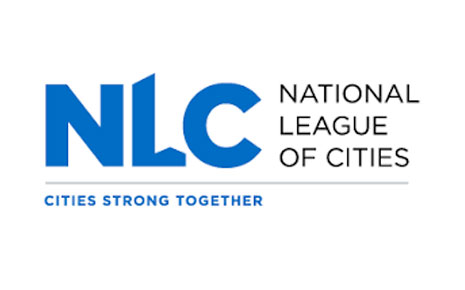
The National League of Cities is an organization comprised of city, town and village leaders that are focused on improving the quality of life for their current and future constituents.
With over 90 years of dedication to the strength, health and advancement of local governments, NLC has gained the trust and support of more than 2,000 cities across the nation. Together, our mission is to strengthen local leadership, influence federal policy and drive innovative solutions.
National Association of Regional Councils

The National Association of Regional Councils (NARC) serves as the national voice for regions by advocating for regional cooperation as the most effective way to address a variety of community planning and development opportunities and issues.
NARC members include regional councils, councils of governments (COGs), regional planning and development agencies, Metropolitan Planning Organizations (MPOs), and other regional organizations. Members work collaboratively with their communities – large and small, urban and rural – to address their citizens’ needs and promote a regional approach to planning for the future.
United States Department of Transportation

Mission
To deliver the world’s leading transportation system, serving the American people and economy through the safe, efficient, sustainable, and equitable movement of people and goods.
Values
Our values represent guiding principles that are the core of who we are as a Department and how we approach our work. Our values are at the foundation of our strategic approach to achieving our mission. They guide how we work with partners and how we treat each other. In serving the public, we strive to live up to these values in everything we do.





